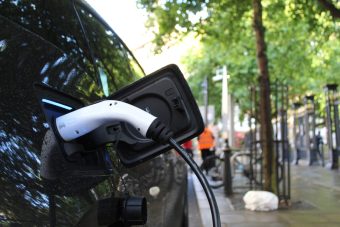
Numerous factors influence the importance and representation of electric vehicles at the local and state level. In the first place, global trends are important, or let’s colloquially call it fashion. This has been dominant in the past, for instance, in the development strategies of smart technological solutions, i.e. smart mobile phones. Thus, due to a wrong assessment and a strategic decision not to implement touch screens, the Finnish Nokia, once the world’s leading mobile phone manufacturer, disappeared from the global market. But fashion is dominant even today in the sustainable short-range urban individual mobility segment, the so-called micro-mobility. No one could have guessed that electric scooters would flood cities worldwide in the number they have, except perhaps their manufacturers.
The reason for this growth is primarily due to their affordable price. However, the possibility of their unhindered use in cities was also affected by affirmative measures to increase the accessibility of city facilities, primarily intended for citizens with reduced mobility (disabled, elderly, mothers with prams), considering that these are transport means which with their 50 plus kilograms are not at all easy to carry in the hands upstairs and the like.
On the other hand, we have the measures of the so-called traffic calming through the redistribution of street space from passenger cars to different modes of movement, reducing their speed and relegating their dominant role in local environments to increase the safety of children, pedestrians, cyclists, and other vulnerable categories of road users in cities.
At the time of their expansion, the unpreparedness of all relevant state administration bodies and local governments in cities worldwide was evident because the regulations and rules necessary for their safe use were not in place. Evidence that this development has surprised state administration and local government bodies worldwide comes from the heterogeneity in their approach to solving this pressing problem. While some completely prohibit their use, others wander around looking for ways to integrate them with other forms of movement in cities safely. Therefore, to increase the representation and more significant role of electric vehicles, they must become modern transport means of the future in users’ minds, as opposed to outdated conventional passenger cars.
As an excellent example from the previous successful practices in cities and countries that have advanced far in the use of electric vehicles, below are recommendations on how to be successful in implementing this relatively new environmental concept, for which several key factors are crucial, plus the challenges and various obstacles that are still not overcome.
IN FOCUS:
- THE TREND OF GROWING ELECTRIC CAR SALES
- THE PATH TO THE DEVELOPMENT OF E-MOBILITY
- NOVI SAD STEPS INTO THE WORLD OF ELECTROMOBILITY
Factors, challenges and obstacles

The first factor is the clear and unequivocal determination of state administration and local governments for electric, i.e. environmentally friendly and sustainable operation of means of transport in road and city traffic. For example, when purchasing new buses for public city and suburban transport or new vehicles for rubbish collection, the decisive (dominant) criteria should be the environmental one (quieter operation and so-called zero emissions) instead of the economic one (lower price). It is manifested through continuously transparently applying green or environmentally friendly procurement criteria for all utility vehicles. In this case, the priority must be the general public interest and the well-being of the population, i.e. the purchase of exclusively electric and/or other fully environmentally friendly vehicles as opposed to the purchase of a larger number of cheaper, environmentally unacceptable vehicles. Public procurement of all government vehicles, especially utility vehicles, must be green.
Visibility is another factor. All electric vehicles should be clearly marked with the message that the state and local government bodies care for the population’s health and quality of life. It is not only marketing but also the promotion of this determination, which in the long run, raises the population’s awareness about the importance of purchasing exclusively environmentally friendly vehicles (for their individual use). When the population’s awareness matures, every individual will be ashamed to irresponsibly buy a passenger vehicle that is not environmentally friendly and powered by conventional fossil fuels, which, although cheaper, are still dangerous to health and harmful to the environment. Therefore, if something is demanded from the population, at least as much must be given to them.
The third indispensable success factor is comprehensive support. There are two segments here – the first is affordable and sufficiently widespread top-quality infrastructure for the electricity supply, i.e. chargers for electric vehicles and the other is state subsidies for the purchase of environmentally friendly vehicles.

Serbia promptly started the installation of public charging stations on its motorways as part of its commitment and strategic determination on the road to EU membership. However, motorway support is not enough. An extensive network of fast and semi-fast chargers with sufficient power, to begin with, must be established near tourist destinations, cultural & historical sites, and sports & recreational facilities until it is so widespread that it is available in every populated place with a certain number of inhabitants.
A measure stipulating one charging place for every 10,000 inhabitants could be adopted. This would mean that to start with, Serbia will have to have 600 semi-fast and fast chargers in public parking lots in attractive locations. Support can also come from the private sector, especially since this is a commercial activity, where competition and the creation of the infrastructure for the electricity supply with a higher capacity, shorter charging time and the like must be ensured. In addition, the management of the charger system and efficient charging for the energy used.
There is an ongoing problem both here and abroad with the capacity of the power system for a complete transition to electric drive vehicles, but also with the imperative of obtaining environmentally clean electricity from renewable sources, which is an issue that many countries have been actively dealing with for the past few years. There are also a certain number of current problems in our system, such as the impossibility of billing for consumed electricity (which, according to the regulation, can only be done by a person authorized to distribute electricity), which forces current providers to charge for this service in line with the duration of the charger’s use, i.e. parking, using applications that only support payment cards of Serbian banks which prevents foreign users from using the charger, billing via a mobile phone operator which requires that you have the Serbian phone number and others.
To avoid demotivation, electric vehicle users should be given the most flexible and universal payment method, analogous to the current functioning of fuel supply stations. However, this part will certainly develop spontaneously under the developing market demand and improve at the request of users, so it is still not realistic to expect that to happen until there is a greater share of electric vehicles in the overall number of vehicles in Serbia.
Read the story in the new issue of the Energy portal Magazine ELECTROMOBILITY



